#American portraitists
Explore tagged Tumblr posts
Text
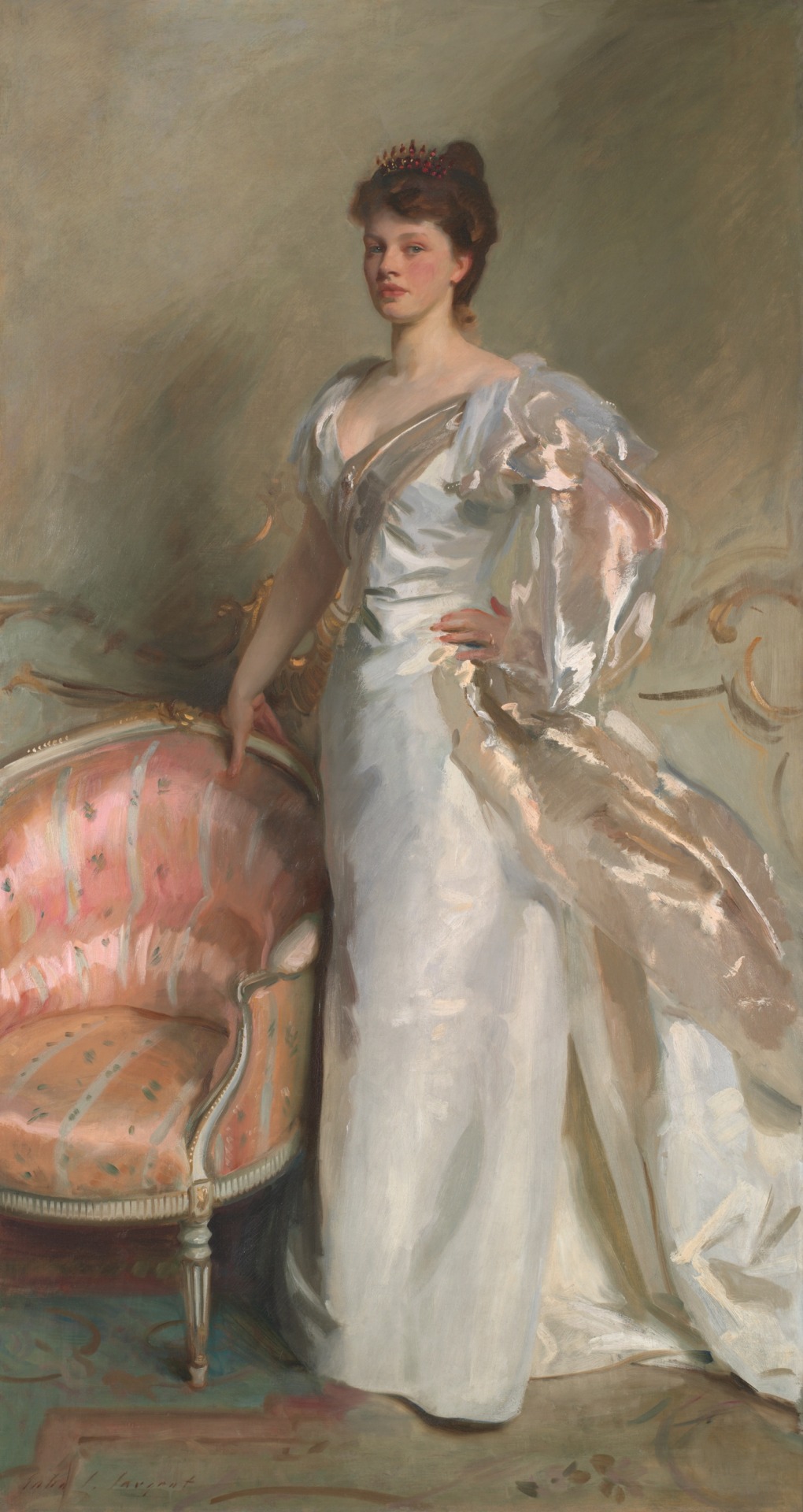
Mrs. George Swinton (Elizabeth Ebsworth) John Singer Sargent (American; 1856–1925) London, 1897 Oil on canvas Art Institute of Chicago, Chicago, Illinois
#John Singer Sargent#Sargent#American art#American painters#American portraitists#Edwardian Era#Gilded Age#19th century#1890s#portraits#society portraits#fashionable#Mrs. George Swinton#Elizabeth Ebsworth#Elizabeth Swinton#Elsie Swinton#Grand Manner#gowns#satin#drapery#fabrics#tiaras#virtuosity#brushwork#chairs#upholstery#singers#amateur singers#high society
73 notes
·
View notes
Text
Alice Neel (1900-1984)
Alice Neel (Jan 28, 1900 – Oct 13, 1984) was an American visual artist. Alice Neel portrait in her studio by © Lynn Gilbert 1976, New York. Recognized for her paintings of friends, family, lovers, poets, artists, and strangers.Photograph of Alice Neel titled Alice Enríquez 1929. x Neel is considered one of the greatest American portraitists of the 20th century. Her career spanned from the 1920s…
#American portraitists#American visual artist#art by women#Art HERstory#Lynn Gilbert#painter#women painters
2 notes
·
View notes
Text
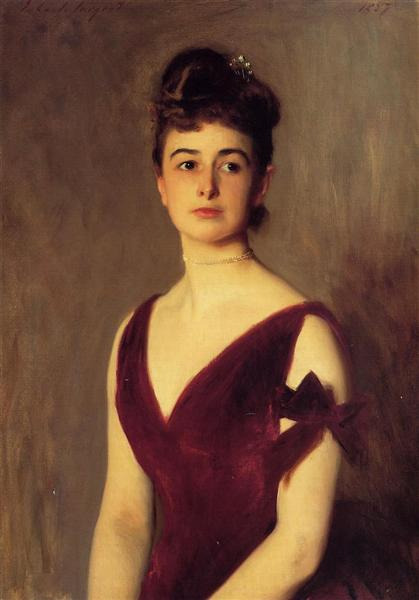
John Singer Sargent (American, 1856-1925) • Portrait of Louise Pomeroy Inches • 1887 • Museum of Fine Arts, Boston
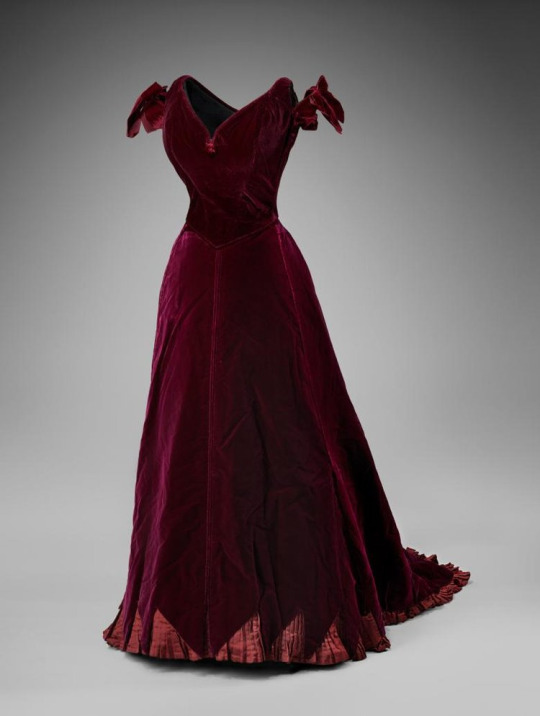
Evening Dress • Unidentified Maker • American • Silk velvet with silk plain weave lining

How wonderful that such a well-preserved dress exists to enliven a famous portrait painting! This dress is one of my favorites for a couple of reasons – firstly, I love velvet and this silk velvet is the real deal – gorgeous. Secondly, I've seen the portrait many times at the MFA in Boston. The dress was in a glass case at the blockbuster Fashioned by Sargent exhibition also at the MFA.
I've read that Louise Inches was expecting her third child when she sat for this portrait and that the dress had been designed to accommodate extra panels as her figure expanded. She and Sargent got on well. Both were music lovers and accomplished musicians.
#portrait#art#painting#art history#john singer sargent#female portrait#society portrait#american expat artist#artist#portraitist#museum of fine arts boston#paintings i've seen#historic dresses#fashion history#late 19th century art#fine art#the resplendent outfit#1880s fashion history
338 notes
·
View notes
Text

Ellen Emmet Rand (American, 1875 - 1941) • Self-Portrait • 1927
Ellen Emmet Rand was a painter and illustrator. She specialized in portraits, painting over 500 works during her career including portraits of President Franklin D. Roosevelt, artist Augustus Saint-Gaudens, and her cousins Henry James and William James. Rand studied at the Cowles Art School in Boston and the Art Students League in New York City and produced illustrations for Vogue Magazine and Harper's Weekly before traveling to England and then France to study with sculptor Frederick William MacMonnies. The William Benton Museum of Art at the University of Connecticut owns the largest collection of her painted works and the University of Connecticut, as well as the Archives of American Art within the Smithsonian Institution both have collections of her papers, photographs, and drawings.
#art#art history#self portrait#painting#oil painting#ellen rand#woman artist#american artist#late 19th to early 20th century american art#artist as subject#the canvas mirror art blog#art blogs on tumblr#art lovers on tumblr#portraitist
27 notes
·
View notes
Text
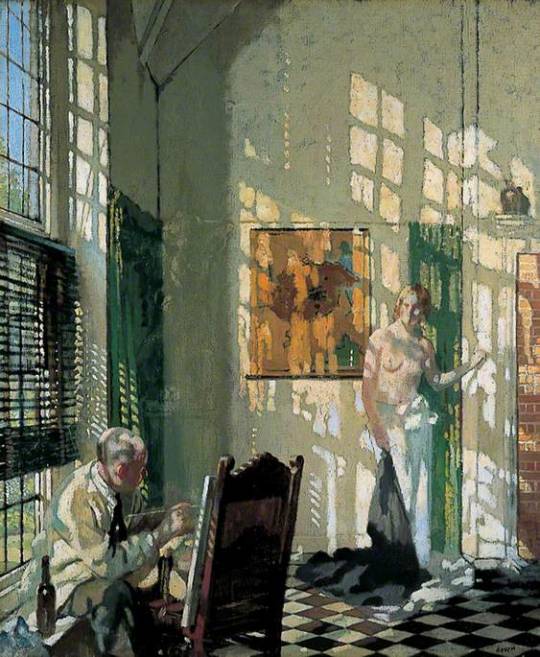
William Orpen (British, ) • The Studio • c. 1910 • Leeds Art Gallery, West Yorkshire, UK
#art#fine art#painting#william orpen#royal academician#paintings of interiors#making room blog#paintings of art studios#american painter#british artist#early 20th century art#british painter#portraitist
84 notes
·
View notes
Text

Self Portrait
Artist: Rembrandt Peale (American, 1778–1860)
Date: 1840
Medium: Oil on canvas
Collection: Philadelphia Museum of Art, Philadelphia, Pennsylvania, United States
Description
Rembrandt Peale was sixty-two and a distinguished portraitist and history painter when he made this handsome self-portrait as a wedding gift for his second wife, the artist Harriet Cany Peale. Painting his first self-portrait at age thirteen, he completed at least a dozen during his long life. In this work, his meticulous execution and masterful rendering of light and shadow defines and illuminates his face, forehead, and silver curls, imparting a soft yet dramatic dimension to the picture.
#self portrait#oil on canvas#male#painting#rembrandt peale#american painter#american culture#man#portraitist#history painter#handsome#american art#19th century painting#artwork
18 notes
·
View notes
Text
Through the Lens: Iconic Photographers Who Shaped the Art of Photography
Photography is much more than capturing a moment; it is a powerful medium of storytelling, emotion, and expression. Over the years, countless photographers have left indelible marks on the art form, shaping how we view the world through their lenses. This article explores some of the most iconic photographers and their contributions to the ever-evolving field of photography. Henri…
#A Visionary in Japanese Photography#Annie Leibovitz#Annie Leibovitz: The Portraitist of Legends#AnnieLeibovit#Ansel Adams#Ansel Adams: The Poet of the American Landscape#AnselAdamsPhotography#ArtOfPhotography#book-review#books#CindySherman#ClassicPhotography#CreativePhotography#Daido Moriyama#Daido Moriyama: The Gritty Chronicler of Urban Chaos#DaidoMoriyama#DocumentaryPhotography#Dorothea Lange#Dorothea Lange: Humanizing the Great Depression#DorotheaLange#famous photographer#FamousPhotographers#fiction#FineArtPhotography#GlobalPhotography#Henri Cartier-Bresson#Henri Cartier-Bresson: The Master of the Decisive Moment#HenriCartierBresson#Humanizing the Great Depression#Iconic
1 note
·
View note
Text






Harlem Renaissance portraits by Winold Reiss. A gifted portraitist, German-born Reiss challenged the convention of racial stereotyping by portraying African American, Native American, and Asian American subjects as dignified individuals. In 1924, Reiss was commissioned to make portraits of major figures of the Harlem Renaissance for a special issue of Survey Graphic, a magazine that focused on sociological and political issues.
From: Messynessychic.com
166 notes
·
View notes
Text

Lady Agnew of Lochnaw (1892) 🎨 John Singer Sargent 🏛️ National Galleries Scotland 📍 Edinburgh, Scotland
Sargent’s dazzling and unforgettable image of Lady Agnew is one of the most famous of his many portraits of fashionable London society. For both the artist and his sitter, the painting was an instant success, establishing Sargent’s reputation as the portrait painter of choice for the London elite and immediately transforming the newly elevated Lady Agnew into a society celebrity.
Sargent was born in Florence and spent his childhood travelling across Europe with his wealthy American parents who restlessly followed the changing social seasons. In 1874 he entered the Paris studio of the stylish French portraitist, Carolus-Duran. The young Sargent combined the flamboyant style of his teacher with his study of old masters such as Rembrandt and Velázquez but was also influenced by Monet and Impressionism. His provocative and unconventional Portrait of Madame X caused a scandal at the Paris Salon exhibition in 1884; and, when Sargent settled in London in 1886, he initially found it difficult to find clients as his bravura, continental style of painting attracted suspicion. However, his dashing technical mastery and confident manner were ideally suited for aristocratic patronage and he soon won over his critics with his elegant, flattering portraits. When his portrait of Lady Agnew was shown at the Royal Academy in 1893, one contemporary observed: ‘London is at his feet … he has had a cracking success.’
The sitter was born Gertrude Vernon and married Andrew Noel Agnew in 1889. Her husband, fifteen years her senior, was a barrister and later an MP and deputy-Lieutenant in Wigtownshire; he succeeded his father as 9th Baronet of Lochnaw in 1892, shortly before Sargent embarked on this portrait. The exact circumstances behind the commission are not known, but the Agnews may have met the artist through mutual American friends. According to notes in her husband’s diary, work on the portrait progressed swiftly, and Sargent later recalled that it was painted in just six sittings.
Lady Agnew is shown seated in a Louis XVI chair against the backdrop of a Chinese silk hanging, both of which were standard props in Sargent’s studio. She is reported to have been of frail health; she recovered slowly from a severe bout of influenza in 1890 and was apparently still convalescing and suffering from exhaustion when she sat to Sargent, which may account for her slightly ghostly pallor in the painting. Lady Agnew fixes the spectator with an intelligent, faintly amused gaze but it is her elegant white silk dress and lilac sash that threaten to steal all our attention. There are brilliant passages of painting in the highlights, reflections and coloured shadows that show Sargent at his best as a painter of surfaces and textures, the ideal artist for a gilded, polished yet ultimately superficial society.
Sargent’s image of Lady Agnew helped her to become a leading light in fashionable circles, holding lavish salons in her London home. Ironically, the high costs of this hospitality meant that she was eventually forced to sell some family pictures including this portrait which was purchased by the Scottish National Gallery in 1925.
#Lady Agnew of Lochnaw#John Singer Sargent#oil painting#painting#oil on canvas#portrait#1892#american#Gertrude Agnew#National Galleries Scotland#Edinburgh#Scotland#art#artwork#art history
268 notes
·
View notes
Text

"No class of artists excels the hummingbirds. Their nests are wonders of beauty, delicacy, and architecture-plant down and dried flower petals hold together with silvery spider's web, exquisitely decorated with greyish-white lichens." ~ Royal Dixon, "Feathered Artists," The Human Side of Birds, 1917
Brazilian Hummingbirds
Artist: Martin Johnson Heade (American, 1819-1904)
The American painter Martin Johnson Heade started out as a portraitist and took up landscape painting late in life. He spent three years travelling around Europe during his formative years. This first Grand Tour marked the start of an itinerant lifestyle which he continued to lead throughout his entire existence. From 1840 to 1859 he lived in Philadelphia, New York, Saint Louis, Chicago, Trenton and Providence. His second trip to Europe at the end of the 1840s brought about a shift in his style towards a more sophisticated type of genre painting. He moved to New York about 1859; there he came into contact with other landscape artists such as his lifelong friend Frederic E. Church and began to paint landscapes. Despite exhibiting his work at the National Academy of Design on several occasions, he never became a member and nor was he particularly involved in the New York art scene.
Heade’s mature style, characterised by great precision and luminosity and influenced by the work of Lane, whom he may have known, was later dubbed Luminism. The numerous scenes conveying the calm and splendour of the salt marshes are the compositions that have earned him greater fame. This marshy ground provided Heade with the opportunity to capture changes in the atmosphere and light.
Possibly encouraged by his friend Church, Heade travelled to Central and South America (Brazil, Colombia, Panama and Jamaica) three times between 1860 and 1870. During these trips he painted exotic flowers and birds, in addition to scenery. The combination of these motifs resulted in his original still-life paintings of orchids and hummingbirds in tropical settings, which are acknowledged as the most original part of his oeuvre.
In 1883, at the age of sixty-four, Heade married and moved to Saint Augustine, Florida, where he continued to paint the tropical flowers that grew there. He died there years later, completely forgotten by the art world.
#quotes#hummingbird quotes#hummingbird painting#tropics#hummingbird nest#royal dixon quotes#brazilian hummingbirds#martin johnson heade#luminosity#calm#splendor#artwork#fine art
53 notes
·
View notes
Text

Artist: Karl Witkowski (1860–1910), was a Polish-American portraitist and genre painter. He painted scenes of contemporary daily life in America, his paintings have a characteristic humor and brightness, they are serious or humorous.
Title: Admiration
Date 1900
Medium oil on canvas
20 notes
·
View notes
Photo
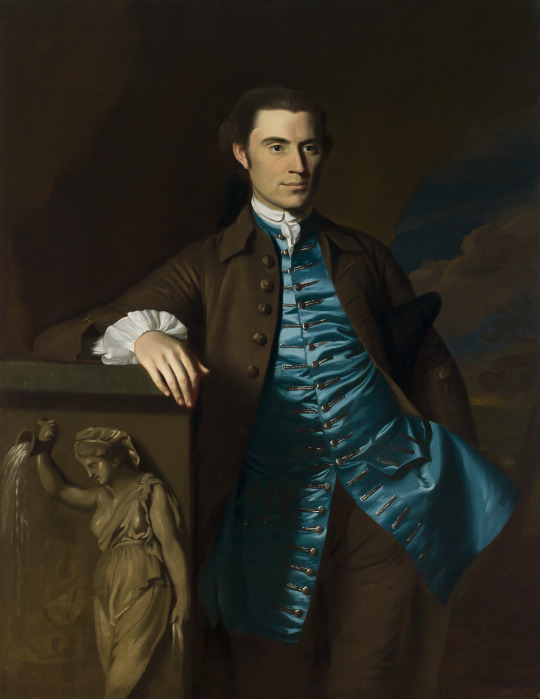
Thaddeus Burr John Singleton Copley (American; 1738–1815) 1758–60 Oil on canvas Saint Louis Art Museum, St. Louis, Missouri
#18th-century art#18th-century American art#18th-century American artists#18th-century portraits#American art#American artists#American paintings#American painters#portrait paintings#American portraitists#American portraits#John Singleton Copley#Copley#satin#18th century#1750s#1760s#18th-century costume#waistcoats#18th-century American portraits#portraits#18th-century style#Thaddeus Burr#pedestals#Colonia America#gods and goddesses#Demeter#cornucopias#sculptures#relief sculptures
53 notes
·
View notes
Text






This Week in Julie-History: Cover Girl 1955
Seventy years ago, Julie Andrews officially became an American "cover girl" for the first time with the publication of this lead story in the January 9, 1955 edition of the syndicated This Week newspaper magazine. Published just three months after her New York debut as Polly Brown in The Boy Friend, the magazine proclaimed Julie a new star who had "won Broadway's heart."
The colour cover photo was taken by renowned celebrity portraitist Zinn Arthur who recalled that "the January 9 issue of the magazine with [Julie] on the cover was her very first major USA exposure" (1990, p. 199). His shot captures an unusually relaxed and sultry Julie. Barely 19, she exudes the charm of a fresh-faced, American-styled teen, casually dressed in a slightly crumpled cotton shirt. Her tousled chestnut hair is swept up, and her smile blends youthful confidence with soft allure -- a perfect fifties girl next door.
The accompanying article by Charles D. Rice (1910–1971) extends the portrait of Julie as wholesome youth, incorporating many of the core themes that would come to define her star image in the years ahead. Described as "relentlessly winsome" and "utterly charming," Julie remains "a completely normal, even naive, young English actress" -- the kind of girl one would "like to bring home to Mother" (Rice, 1955, p. 23).
The piece also underscores Julie's connection to the past, highlighting her role in The Boy Friend, a nostalgic nod to 1920s musicals, and her "wide eyed" fascination with big city American culture. Even at this very early stage of her international career, Andrews was cast as a nostalgic feminine ideal, offering a comforting sense of continuity amid a rapidly changing modern world.
Sources:
Arthur, Z. (1990). Shooting superstars: Me, my camera and the show biz legends. Artique Press.
Assoc. Press. (1971). Charles D. Rice, magazine editor. New York Times. February 1, p. 35.
Assoc. Press. (2003). Zinn Arthur, 90, celebrity photographer. New York Times. March 21, p. C-11.
Rice, C.D. (1955). Can that be me? This Week: The Sunday Magazine, January 9, p. 23.
© 2025, Brett Farmer. All Rights Reserved.
17 notes
·
View notes
Text
Regency Fashion: Veils
Regency era portraits and fashion plates show many examples of how sheer veils, sometimes of lace, were worn as fashionable accessories. For mourning, Regency and Victorian women wore black semi-opaque scarves. And, of course, veils were and continue to be fashionable as bridal wear.
Here are some of my favorite examples of veils in portrait paintings of the Neoclassical/Regency era:

Gilbert Stuart (American, 1755-1828) • Lucinda Smith • 1809
Solely a beautiful lacework veil arranged atop the head, framing the curls on the forehead. No other head accessory here or in the portraits below.



Thomas Lawrence (British, 1769-1830) • Lady Manners • 1794 • Cleveland Museum of Art, Cleveland, Ohio
In the Lawrence portrait, the veil (or perhaps less of a veil and more of a long scrarf) appears to be worn wrapped around the head, leaving some space for curls to show through, and flowing down gracefully past the waist.


Right: John Wesley Jarvis (British, 1780-1839) • Anne Brown Dickey • c. 1807-10
(Veil pinned to the the head with a lovely, pearl-studded comb.)
Left: Elizabeth Vigée Le Brun (French, 1755-1842) • Luise von Mecklenburg-Strelitz, Queen of Prussia • 1802
(A lace-edged scarf of the same material as the dress sleeves is worn with a bandeau and wrapped around a bundle of curls, flowing down the back. There's enough length that the woman can wrap a section of fabric around her lower arm.)
Below are fashion plate examples of hat veils.


These veils are likely worn to shield the face from damaging sun and/or to allow the wearer a certain amount of privacy, especially to hide crying eyes due a death or broken love affair.
#art#portrait#portrait painting#society portrait#fashion & art history blog#elizabeth vigée le brun#fashion history#veils in regency fashion#portraitist#regency fashion#thomas lawrence#john wesley jarvis#the resplendent outfit blog#late 18th-early 19th century art#gilbert stuart#british artist#american artist#french artist#female portrait#regency hat veils#neoclassical fashion history
31 notes
·
View notes
Text

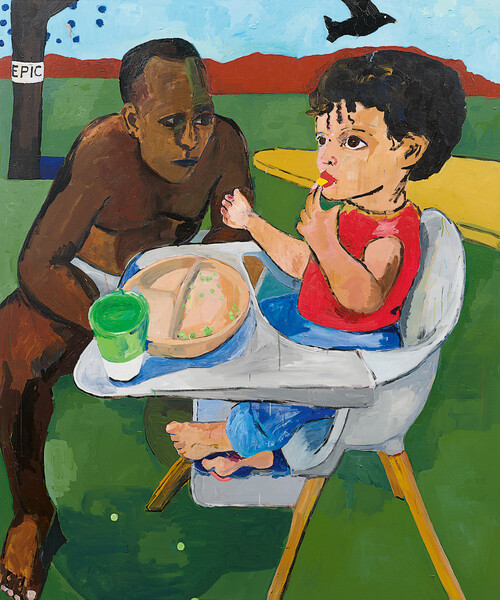
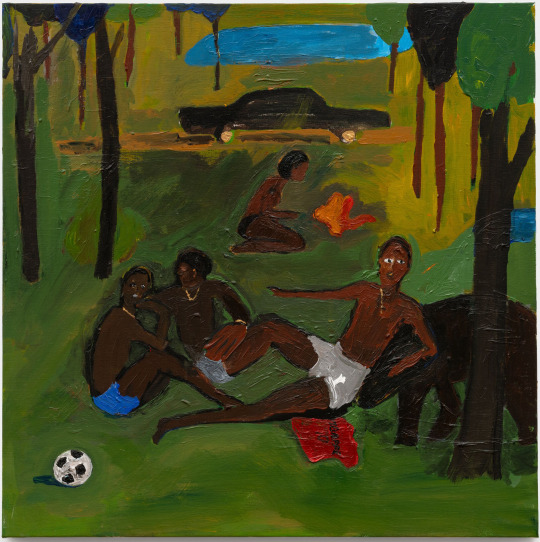



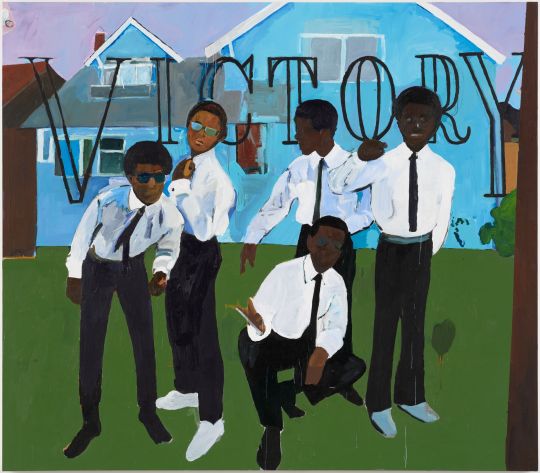
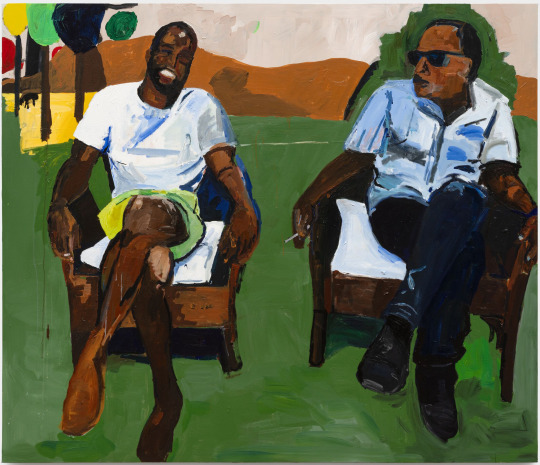

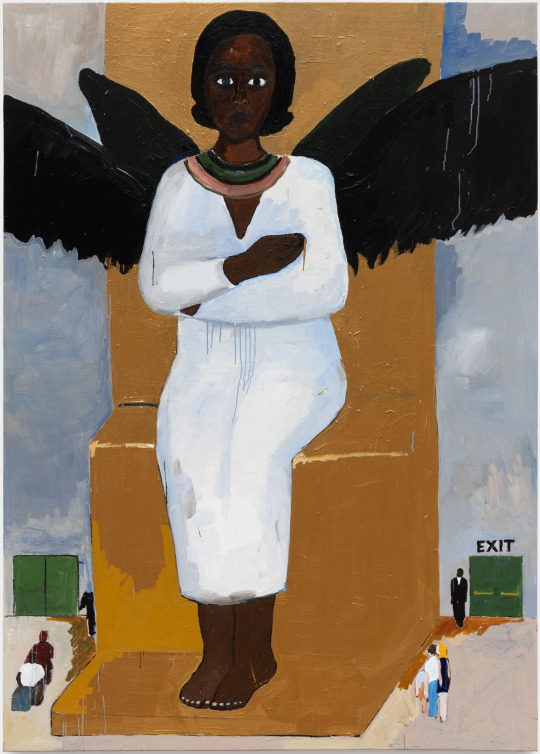

Henry Taylor born 1958, Ventura CA, USA
"Henry Taylor’s imprint on the American cultural landscape comes from his disruption of tradition. While people figure prominently in Taylor’s work, he rejects the label of portraitist.
Taylor’s chosen subjects are only one piece of the larger cultural narrative that they represent: his paintings reveal the forces at play, both individualistic and societal, that come to bear on his subject. The end result is not a mere idealized image, but a complete narrative of a person and his history.
Taylor explains this pursuit of representational truth: ‘It’s about respect, because I respect these people. It’s a two-dimensional surface, but they are really three-dimensional beings.’
55 notes
·
View notes
Text

MWW Artwork of the Day (10/27/24) George de Forest Brush (American, 1855-1941) An Arapahoe Boy (c. 1882) Oil on canvas (grisaille), 22.9 x 18.4 cm. National Gallery, Washington DC (Gift of Jane Wyeth)
Fresh from years of study focused on the human face and figure, Brush skillfully captured the direct gaze and self-assured presence of the young Indian boy. Clearly intrigued by the details of the boy's breastplate, necklace, and fur-wrapped braids, Brush displayed his technical expertise in rendering the varied textures of hair, shell, and fur. This painting shows Brush at his best—both as a skilled portraitist and as one of the most important interpreters of the American Indian in nineteenth-century American art.
6 notes
·
View notes